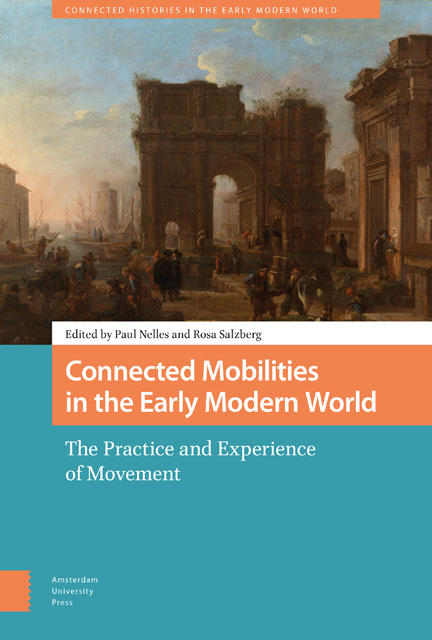Movement and Mobility in the Early Modern World : An Introduction
Published online by Cambridge University Press: 15 June 2023
Summary
Abstract
The Introduction offers an orientation to mobility themes emerging from the social sciences and considers how they can generate new understandings of the early modern world. It calls for integrating the study of different forms of mobility – embodied, local, global – and highlights the need to pay attention to the ‘quotidian mechanics’ of movement at all scales. It is structured around three themes: moving bodies; crossing borders; and networks, distance, and circulation.
Keywords: circulation; trade; travel writing; global history; communication; transport
From around 1450, Europe became more mobile and more connected – both internally and to the wider world – than ever before. The enhancement of transport and communication systems (road and river networks, the printing press, postal services); the growth of cities; the spread of “Renaissance” culture; the global expansion of trade, Christianity, and empires; and the ever-increasing movement of people and goods stimulated encounters and exchanges, conversions and conflicts. At the same time, the growth and acceleration of mobility spurred the development of policies and infrastructures that aimed to regulate and channel movement. In the words of Martin and Bleichmar, “the early modern period was uniquely liminal in so far as it opened up new horizons of movement and possibility, while simultaneously prompting the desire to establish boundaries, to demarcate and dominate.” The intersection and creative tension between these crosscurrents fundamentally shaped the lives, itineraries, and experiences of mobile individuals. They also left lasting traces on many other aspects of early modern life: on settled communities, on urban and rural landscapes, and on patterns of cultural formation.
Our own age of hyper-mobility and instant connection – but also of pandemic lockdowns and escalating climate and refugee crises – is making us more sensitive to these complex and ambivalent dynamics in the past. Yet it is crucial to be aware not just of continuities between our day and the past but also of fundamental differences in the actual practice and experience of movement. As such, more attention can be given to what we might call the “quotidian mechanics” of early modern mobility: the material and physical experiences together with the systems, technologies, and practices that facilitated and impeded movement, whether on a local or a global scale.
- Type
- Chapter
- Information
- Connected Mobilities in the Early Modern WorldThe Practice and Experience of Movement, pp. 7 - 38Publisher: Amsterdam University PressPrint publication year: 2022



